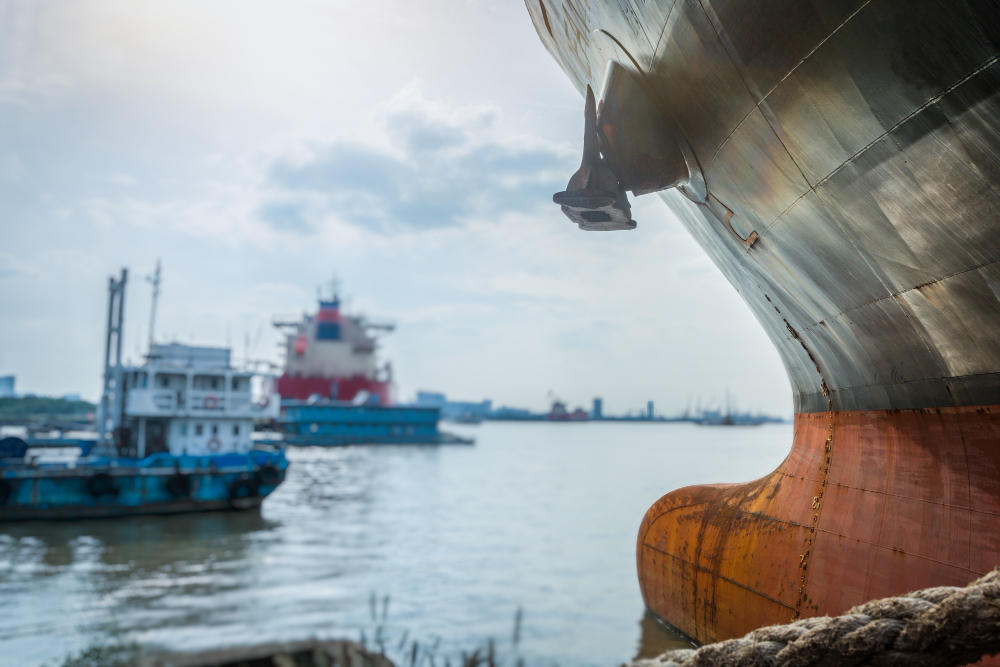
Blog
Navigating the Future: How Marine IT Solutions are Revolutionizing the Shipping Industry
The maritime industry has always been an essential part of global trade, connecting businesses and people across the vast oceans. However, with the advancement of technology, the industry is undergoing a massive transformation, and marine IT solutions are at the forefront of this change. From onboard communication to real-time vessel tracking, these solutions are revolutionizing the way ships and ports operate. The integration of technology has not only improved the safety and efficiency of the industry but also reduced its environmental impact. Marine IT solutions are enabling the industry to streamline processes, reduce costs, and provide better customer service. In this article, we will take a closer look at how marine IT solutions are transforming the industry and the benefits they offer to stakeholders in the maritime ecosystem.
Importance of Implementing Marine IT Solutions
Marine IT solutions are a combination of hardware and software that enables ships and ports to communicate seamlessly, exchange data, and automate processes. These solutions are designed to meet the unique requirements of the maritime industry and offer several benefits. For instance, they can enable ships to communicate with ports in real-time, optimize navigation routes, and monitor cargo conditions.
The implementation of marine IT solutions can also lead to cost savings by reducing fuel consumption, optimizing vessel operations, and improving cargo handling. For example, real-time vessel tracking can enable shipping lines to optimize vessel schedules and reduce fuel consumption, leading to significant cost savings. The benefits of marine IT solutions are not limited to cost savings; they can also improve the safety of ships and crew and reduce the environmental impact of shipping.
Benefits of Real-Time Monitoring of Vessels and Cargo
Real-Time Monitoring of Vessels and Cargo
Real-time monitoring of vessels and cargo is one of the most significant benefits of marine IT solutions. It enables shipping lines and cargo owners to track the location of vessels and cargo in real-time, leading to improved efficiency, safety, and customer service. For instance, real-time tracking can enable shipping lines to optimize vessel schedules, reduce transit times, and provide accurate arrival times to port authorities and cargo owners.
Impact on the Crew and Environmental Safety
The implementation of marine IT solutions can have a significant impact on the crew's working conditions and environmental safety. For instance, the automation of manual processes, such as cargo handling, can reduce the crew's workload and improve their working conditions. It can also reduce the risk of injury and accidents resulting from manual handling.
Reduced Fuel Consumption and Emissions
Marine IT solutions can also improve environmental safety by reducing fuel consumption and emissions. For example, real-time vessel tracking can enable shipping lines to optimize vessel routes, reduce fuel consumption, and minimize emissions. The implementation of energy-efficient technologies, such as LED lighting and electric propulsion, can also lead to significant reductions in fuel consumption and emissions.
Reducing fuel consumption and emissions can also help shipping lines comply with environmental regulations, such as the International Maritime Organization's (IMO) regulations on emissions. The IMO has set ambitious targets to reduce greenhouse gas emissions from shipping, and marine IT solutions can help shipping lines achieve these targets.
Conclusion
Marine IT solutions are revolutionizing the maritime industry, enabling stakeholders to operate more efficiently, safely, and sustainably. Real-time monitoring of vessels and cargo, automation of manual processes, and energy-efficient technologies are some of the significant benefits of marine IT solutions. These solutions can lead to cost savings, improved customer service, and reduced environmental impact. The implementation of marine IT solutions requires collaboration among stakeholders, including shipowners, port authorities, and technology providers. The industry's transformation requires a collective effort to harness the benefits of marine IT solutions fully. As the maritime industry continues to evolve, marine IT solutions will play a crucial role in shaping its future. Get in touch with us or visit our website to find out more.


